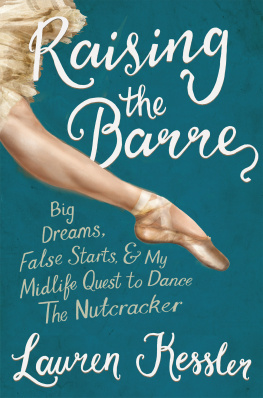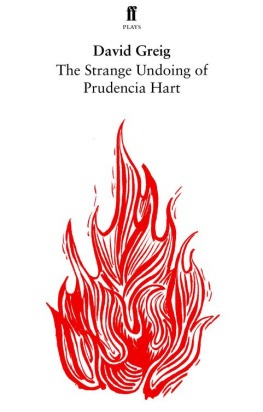Oral Patterns of Performance
Story and Song
Barre Toelken
Oral Patterns of Performance: Story and Song comprises chapter 4 from The Anguish of Snails: Native American Folklore in the West, by Barre Toelken. 2003 by University Press of Colorado
Published by Utah State University Press
An imprint of University Press of Colorado
5589 Arapahoe Avenue, Suite 206C
Boulder, Colorado 80303
The University Press of Colorado is a proud member of The Association of American University Presses.
The University Press of Colorado is a cooperative publishing enterprise supported, in part, by Adams State University, Colorado State University, Fort Lewis College, Metropolitan State University of Denver, Regis University, University of Colorado, University of Northern Colorado, Utah State University, and Western State Colorado University.
All rights reserved
Library of Congress Cataloging-in-Publication Data for the book The Anguish of Snails Native American Folklore in the West
Toelken, Barre.
The anguish of snails : Native American folklore in the West / Barre Toelken.
p. cm. (Folklife of the West ; v. 2)
Includes bibliographical references and index.
ISBN 0-87421-556-0 (pbk. : alk. paper) ISBN 0-87421-555-2 (hardback: alk. paper)
1. Indians of North AmericaWest (U.S.)Folklore. 2. FolklorePerformanceWest (U.S.) 3. FolkloreWest (U.S.)Classification. 4. Oral traditionWest (U.S.) I. Title. II. Series.
E78.W5T642003
398'.089'97078dc21
2003006172
Current Arguments in Folklore edition, 2014
ISBN 978-0-87421-967-8 (paper)
ISBN 978-0-87421-953-1 (ebook)
DOI: 10.7330/9780874219531.c001
Oral Patterns of Performance: Story and Song
Everything is made possible through stories.
Hugh Yellowman, Navajo, explaining why stories are told
Ive been poor most of my life; Ive known only one song.
Little Wagon, Navajo, on the importance of songs
Early in the Navajo creation story, First Man and First Woman (who are depicted as gendered holy beings made up of colored light), hear a strange noise on a nearby mountain shrouded by clouds. Apprehensive about what this unknown noise may signify, but feeling a need to investigate, First Man rejects First Womans advice to avoid the dangers, saying:
Do not be afraid...
Nothing will go wrong. For I will surround myself with song.
I will sing as I make my way to the mountain.
I will sing while I am on the mountain.
And I will sing as I return.
I will surround myself with song.
You may be sure that the words of my song will protect me.
What First Man finds on the mountain is a baby girl, crying; it is Changing Woman, the first real personage in Navajo mythic history, and the closest to a full deity of all the sacred people (yei) in the Navajo pantheon. He brings her back to First Woman, and the two, totally clueless about what to do with a baby, set about ritualizing her life and physical development by creating proper words and stories.
Much of the Beautyway story and ceremony focuses on the discovery and maturation of Changing Woman, and today, whenever a hogan is blessed, or a wedding is performed, or a young woman celebrates her first menstruation, songs from this extensive ceremony are sung, the words vividly dramatizing for contemporary people their identity with the sacred past. For Navajos, actually uttering words creates the reality of their world: Spoken or sung language is a creative act; hence, people avoid speaking of things they dont want to see appear in the world around them. One of the most terrible things to say out loud (if a Navajo carpenter pounds his thumb with a hammer, for instance) is shash, bear, foruttered in passionthe word may really summon a bear, and bears are ritually (and factually) difficult to deal with.
Spoken words, especially when enhanced or intensified by repetition, ritual structures, and musical phrases, are the principal means Navajos use to create a sense of order and harmony in the world they inhabit. The medicines administered to a patient in any Navajo healing ceremony are a response to the symptoms being treated, but healing in any deeper sense comes through the power of the words in the ritual. Along with doing sand paintings (which are symmetrical, cyclic, oriented to the universe, and usually four sided), placing the ritual inside a hogan (which is round, oriented to the east, and represents the womb of Changing Woman), and using four-way repetition in the songs (which represents the four directions), Navajo curing ceremonies have the same patterns and assumptions we have been discussing. Most of these rituals are not secret and are not conducted by mysterious shamans but by hataaii, literally singers, who may be either male or female (hence the uselessness of the stereotypical English term medicine man) and spend about fifteen to twenty years learning the songs, sand paintings, stories, and medications for one ceremony or Way. Most of these singers know several Ways, which are healing rituals envisioned as moving along a trail; obviously, even mastering one is an intellectual achievement of some distinction.
By contrast, a shaman (the term is based on a Siberian Tungus word, so the second syllable has nothing to do with gender) is defined as a person who has gained control over the processes of life and deathusually by having died and come back to life. Shamans are most active in cultures which depend on a lively interaction between the living and the deadhunting cultures are the most prominent exampleswhere the death of animal relatives is explained and mediated, and breaches with the animal world healed, by the magical ability of the shaman to visit the world of dead animals. Such a person would be called a witch by the Navajos and other southwestern tribes, mostly agriculturalists, whose way of viewing reality entails the verbal encouragement of health and fertility for plants and people alike.
Much has been written about these ceremonies, and since our object is to deal with expressions readily available to outsiders, I want only to call special attention to the concept of the creative power in spoken words. When I was a patient in a Beautyway ceremony a few years ago (urged on me by my adoptive Navajo family to promote stability in my life), we reached the part of the story where the Hero Twins, sons of Changing Woman (fathered by the Sun and some drops of water since there were no men yet), are on their way to visit their father, the Sun, who is protected by powerful warriors whose job it is to fight off anyone who approaches. Not only was the story being toldin part through ritual songsbut we were to think of ourselves as actually being there, floating up to the Sun on the same feather that was transporting the Hero Twins, empowered by the words uttered by the singer. As we got closer to the Sun and the battle became fiercer, my Navajo family members began shouting words of encouragement like Dont give up! Were almost there! Protect us with your spear! What I had been doing for an hour during the ceremony was holding over my head a foot-long, chipped stone spearhead, which was in fact getting heavier every second. The singer, Jimmie Descheeny, had also tied a row of stone arrowheads around my head, and I began to realize that these armaments were my means to reach the Sun and assure the safety of those traveling with me; I, the sick one, provided the only protection. After our success, which was celebrated with several fourfold song stanzas, the story described us returning to earth on a lightning bolt. Imaginary, you may say. Sure, in the same way a gripping play or film is imaginary: If its done right, it becomes a very vivid experience.










